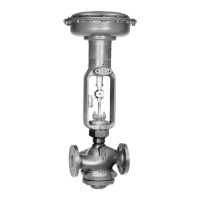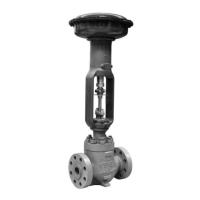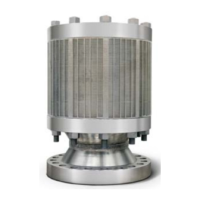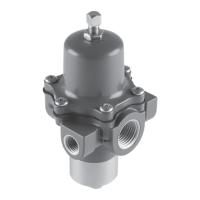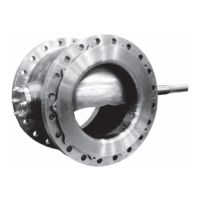Instruction Manual
D102175X012
EZ-C, ET-C, and EWT-C Valves
July 2017
9
D If fluid leaks from the joint, it may indicate that process pressure is applied to the valve. Review your process
shutdown procedures, and be sure process pressure is not
applied to the valve.
D If no fluid leaks from the joint, remove the nuts completely and carefully lift the bonnet off the valve body.
7. For EZ‐C valves, remove the stem locknut. Separate the valve plug and stem from the bonnet, and set the parts on a
protective surface to prevent damage to gasket or seating surfaces.
8. For ET‐C and EWT‐C: If it is necessary to remove and inspect the valve trim, refer to the following Trim Maintenance
section.
9. Remove the bonnet gasket (key 10) and cover the opening in the valve to protect the gasket surface and prevent
foreign material from getting into the valve body cavity.
10. Remove the packing flange nuts, packing flange, upper wiper, and packing follower (keys 5, 3, 12, and 13).
Carefully push out all the remaining packing parts from the valve side of the bonnet using a rounded rod or other
tool that will not scratch the packing box wall. Clean the packing box and metal packing parts.
11. Inspect the valve stem threads and packing box surfaces for any sharp edges which might cut the packing.
Scratches or burrs in the packing box surfaces could cause leakage or damage to the new packing. If the surface
condition cannot be improved by light sanding, replace the damaged parts.
12. If necessary, go to the Trim Maintenance procedures to remove, inspect or replace trim parts. Return to this
section when installing the bonnet on the valve body.
Installing the Bonnet
13. Remove the covering protecting the valve body cavity and install a new bonnet gasket (key 10), making sure the
gasket seating surfaces are clean and smooth. Then slide the bonnet over the stem and onto the stud bolts (key 15).
Note
Proper performance of the bolting procedures in step 10 compresses the spiral wound gasket (key 12) or load ring (key 26) to both
load and seal the seat ring gasket (key 13). It also compresses the outer edge of the bonnet gasket (key 10) to seal the
body‐to‐bonnet joint.
The proper bolting procedures in step 14 include, but are not limited to, ensuring that bolting threads are clean and evenly
tightening the cap screws or nuts onto the studs in a crisscross pattern. Tightening one cap screw or nut may loosen an adjacent
cap screw or nut. Repeat the crisscross tightening pattern several times until each cap screw or nut is tight and the body‐to‐bonnet
seal is made.
Note
Stud(s) and nut(s) should be installed such that the manufacturer's trademark and material grade marking is visible, allowing easy
comparison to the materials selected and documented in the Emerson/Fisher serial card provided with this product.
WARNING
Personal injury or damage to equipment could occur if improper stud and nut materials or parts are used. Do not operate or
assemble this product with stud(s) and nut(s) that are not approved by Emerson/Fisher engineering and/or listed on the
serial card provided with this product. Use of unapproved materials and parts could lead to stresses exceeding the design
or code limits intended for this particular service. Install studs with the material grade and manufacturer's identification
mark visible. Contact your Emerson representative immediately if a discrepancy between actual parts and approved parts
is suspected.
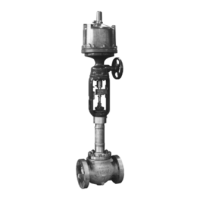
